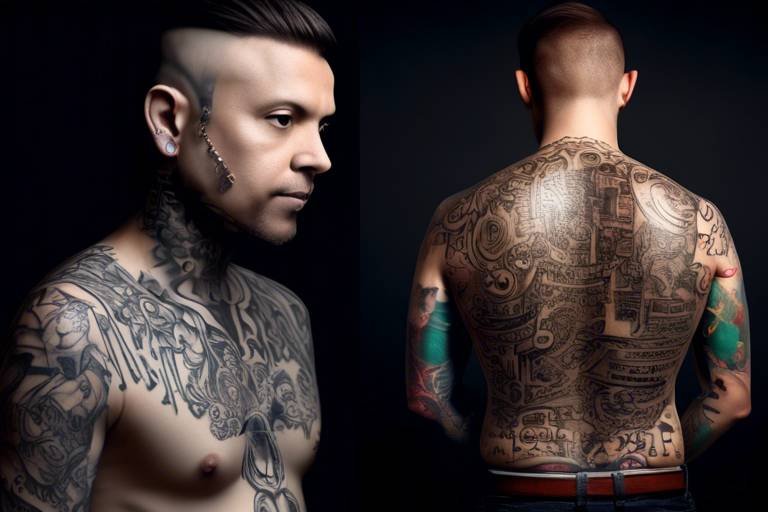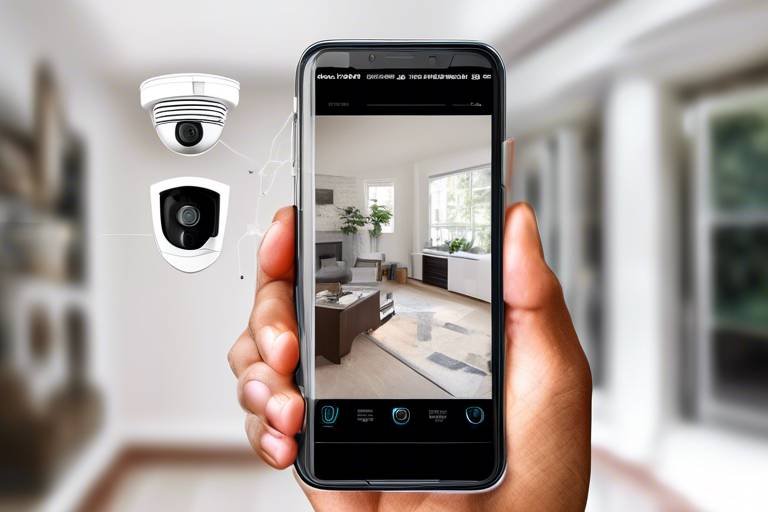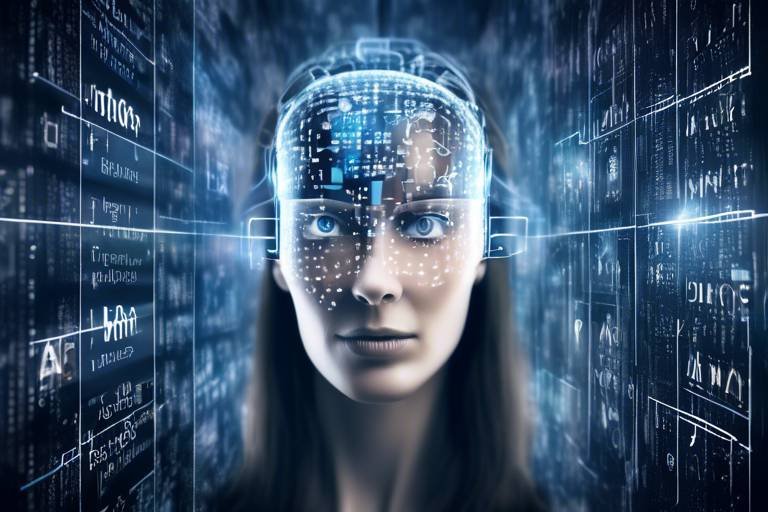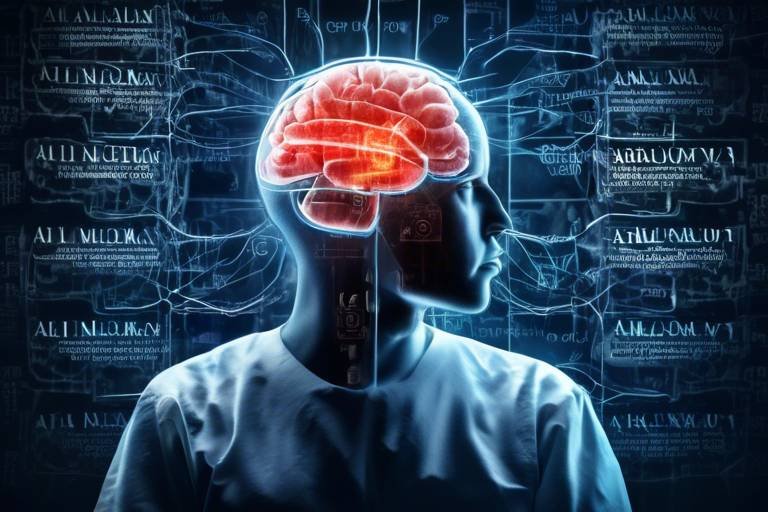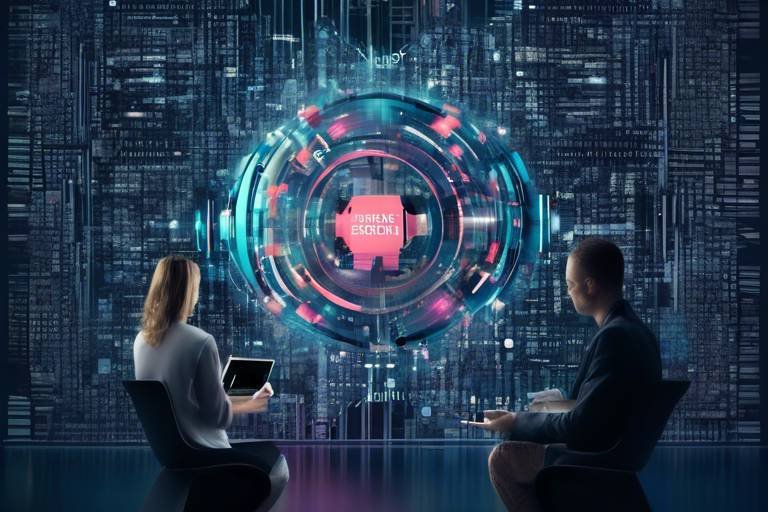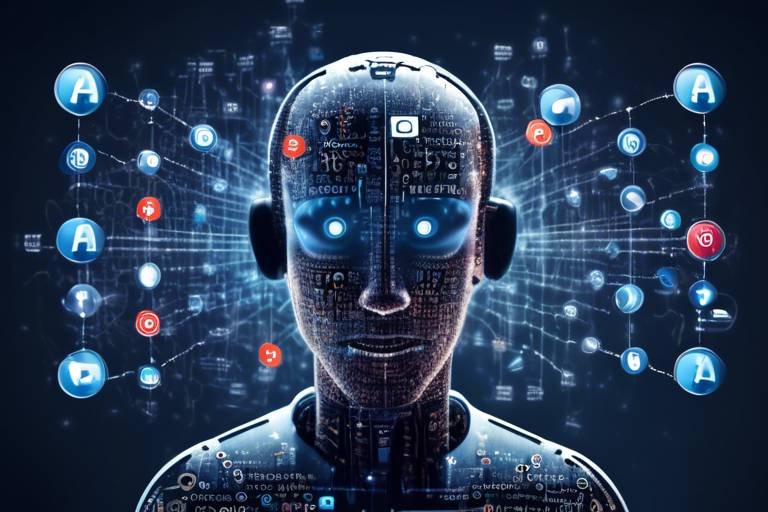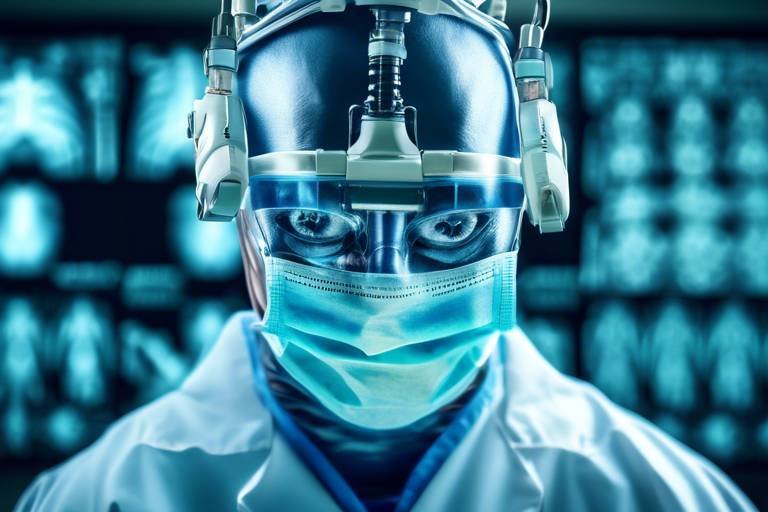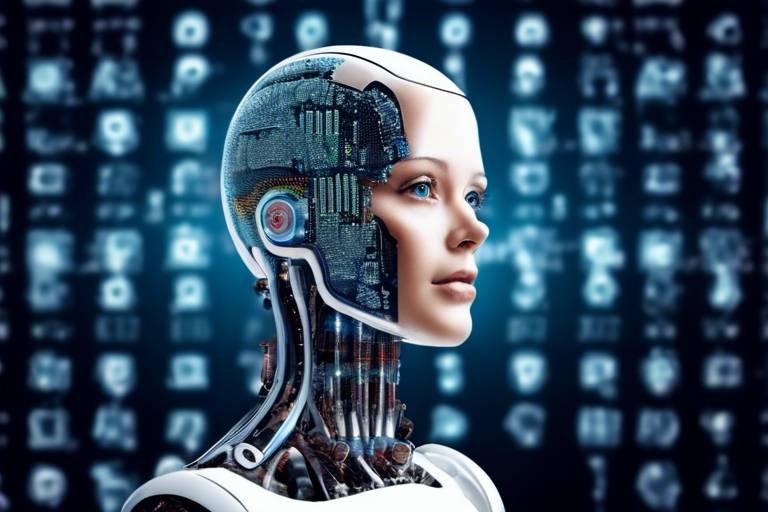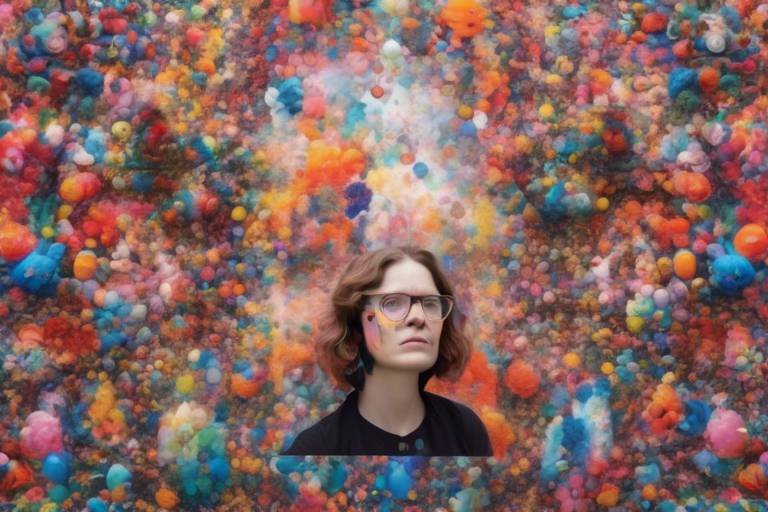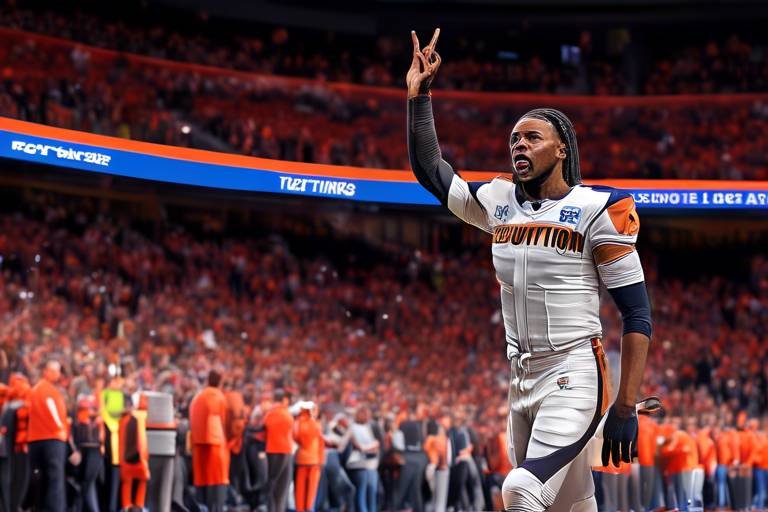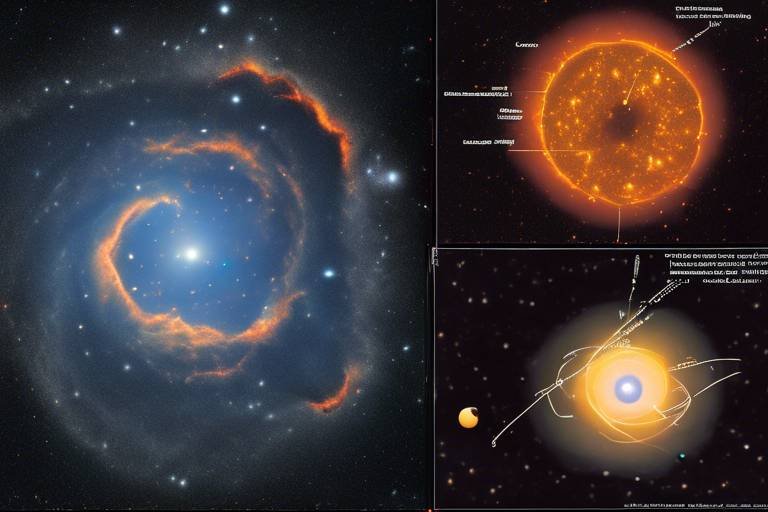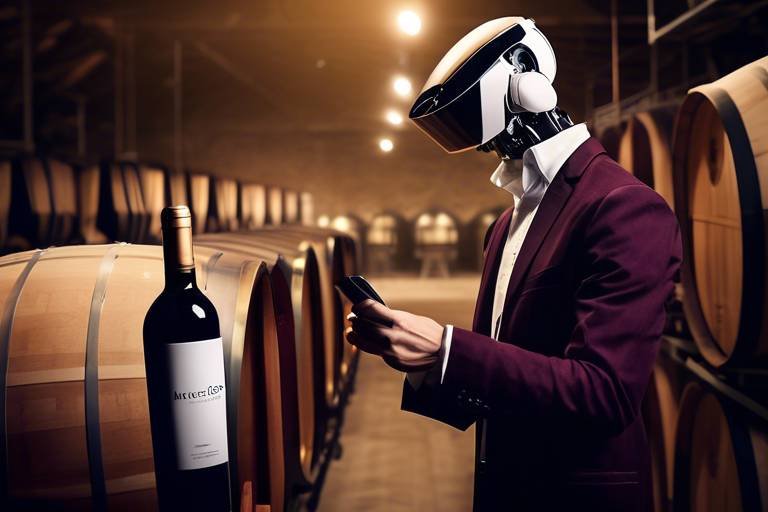Exclusive: AI in Tattoo Designing
Tattoo design has always been a deeply personal form of expression, a canvas that tells a unique story about the individual. But what happens when you blend this age-old art with cutting-edge technology? Enter artificial intelligence, a game-changer that is not just enhancing tattoo artistry but also revolutionizing how we think about body art. Imagine walking into a tattoo studio and having a design tailored specifically for you, one that resonates with your personality and experiences. This is no longer a distant dream; it’s becoming a reality thanks to AI.
AI is pushing the boundaries of creativity, allowing artists to explore new dimensions in their work. It analyzes vast datasets, learns from them, and generates tattoo designs that are not only intricate but also deeply personal. Think of it as having an artistic partner that never tires, always ready to brainstorm new ideas and explore various styles. With AI, the possibilities are endless, and the designs can be as unique as the individuals wearing them.
Moreover, the integration of AI in tattoo design is fostering a new era of personalization. Gone are the days when you had to settle for a generic design that didn’t quite capture your essence. Now, with AI, you can collaborate with technology to create a tattoo that truly reflects your identity. Whether you’re looking for something minimalistic or a bold statement piece, AI can help curate designs that align perfectly with your vision.
As we delve deeper into this fascinating intersection of art and technology, we’ll explore how AI is reshaping the tattoo industry, enhancing creativity, and paving the way for personalized body art that speaks to the soul. Are you ready to discover how AI is not just a tool but a transformative force in the world of tattoo design?

The Evolution of Tattoo Art
Tattoo art is not just a trend; it's a profound expression of culture and identity that has evolved over thousands of years. From ancient tribal markings to modern intricate designs, the journey of tattoos reflects the shifting sands of societal norms and artistic expression. Historically, tattoos were often used as a rite of passage, a symbol of status, or even a form of punishment. Cultures around the world have embraced tattooing, each adding its unique flair to this timeless practice.
In ancient Egypt, tattoos were often associated with fertility and protection, while in Polynesian cultures, they served as a mark of bravery and social status. The intricate patterns and symbols used by the indigenous peoples of the Pacific Islands tell stories of lineage and personal achievement. As we move through history, the significance of tattoos has transformed, particularly in the West, where they began to be associated with sailors and outlaws in the 18th and 19th centuries.
Fast forward to the 20th century, and tattoos began to shed their stigmas, emerging as a form of self-expression among various subcultures. The rise of tattoo parlors and the popularity of tattoo conventions have contributed to the mainstream acceptance of body art. Today, tattoos are a canvas for individual stories, memories, and artistic creativity. In fact, a recent survey revealed that approximately 30% of adults in the United States have at least one tattoo, showcasing the widespread embrace of this art form.
As we delve deeper into the evolution of tattoo art, it's essential to acknowledge the role of technology. The introduction of electric tattoo machines in the late 19th century revolutionized the tattooing process, making it quicker and more precise. This technological advancement paved the way for artists to explore new styles and techniques, leading to the diverse array of tattoo genres we see today, such as realism, watercolor, and geometric designs.
Moreover, the internet has played a significant role in the evolution of tattoo art. Online platforms allow artists to showcase their portfolios, share techniques, and connect with clients globally. Social media, in particular, has transformed tattoo culture, enabling trends to spread rapidly and inspiring new generations of tattoo enthusiasts. This digital landscape has not only democratized tattoo art but also fostered a community where creativity knows no bounds.
As we look toward the future, the evolution of tattoo art continues to be exciting. With the integration of artificial intelligence and innovative design tools, artists are now able to push the boundaries of creativity even further. The marriage of tradition and technology promises to redefine how we perceive and create tattoos, making the art form more accessible and personalized than ever before.

AI Technology in Art
Artificial intelligence is not just a buzzword; it’s a groundbreaking force that is reshaping the landscape of various art forms, including tattoo design. Imagine walking into a tattoo parlor and instead of flipping through a static book of designs, you are greeted by an interactive screen that generates unique tattoo ideas based on your personality, interests, and even your mood. This is the magic of AI technology in art. It harnesses the power of machine learning and neural networks to analyze and create intricate designs that are both innovative and personalized.
At its core, AI in tattoo design leverages complex algorithms that learn from vast datasets, including historical tattoo art, modern trends, and individual user preferences. This means that the designs produced are not only aesthetically pleasing but also culturally relevant and tailored to the wearer. Think of it as having a personal tattoo artist who knows your tastes better than you do! The algorithms can sift through thousands of designs in seconds, identifying patterns and styles that resonate with users, making the design process not just faster but also more engaging.
But how does this all work? The magic lies in the mechanics of machine learning algorithms. These algorithms are trained on a plethora of data, which enables them to understand the nuances of tattoo styles, color palettes, and even the emotions that different designs evoke. For instance, a user might input their favorite colors and themes, and the AI can generate multiple design options that reflect those preferences. This not only enhances creativity but also ensures that the final design is a true representation of the individual.
AI-driven tattoo designs rely on a variety of data sources to create stunning artwork. These include:
- Historical Art: Drawing inspiration from ancient tattoo traditions and styles.
- Contemporary Trends: Keeping up with the latest fads and popular designs in the tattoo community.
- User Preferences: Tailoring designs based on individual tastes and feedback.
By combining these diverse data sources, AI can produce designs that are not only unique but also resonate with the cultural and personal significance of tattoos. This fusion of technology and artistry is paving the way for a new era in body art, where the possibilities are endless.
The importance of customization in the tattoo industry cannot be overstated. Tattoos are deeply personal, often symbolizing significant life events, beliefs, or passions. AI technology makes it easier than ever to create highly personalized designs that reflect the wearer's identity. Whether someone wants a minimalist design or an elaborate piece, AI can accommodate those desires, ensuring that each tattoo is as unique as the individual wearing it.
In conclusion, the integration of AI in tattoo design is not just a technological advancement; it’s a revolution in how we perceive and create body art. The combination of speed, creativity, and personalization offered by AI is transforming the tattoo industry, making it more accessible and innovative than ever before. As we move forward, it will be fascinating to see how artists and technology continue to collaborate, pushing the boundaries of what is possible in tattoo artistry.

Machine Learning Algorithms
When we think about , it’s easy to get lost in the technical jargon. But let’s break it down! Imagine having a super-smart assistant who can sift through thousands of designs and styles in the blink of an eye. That’s what these algorithms do! They analyze massive datasets, learning from patterns and trends to create unique tattoo designs that you might never have thought of on your own.
At the core of this technology are neural networks, which mimic the way our brains work. These networks are trained on a diverse range of tattoo art—from traditional tribal designs to contemporary abstract pieces. By examining these styles, the algorithms can generate new designs that blend elements from different genres, resulting in something fresh and innovative. It’s like having a creative partner who knows all the rules but isn’t afraid to break them!
For instance, the process can be broken down into a few key steps:
- Data Collection: The first step involves gathering a wide array of tattoo designs, styles, and cultural influences. This data serves as the foundation for the machine learning model.
- Training the Model: The algorithm is trained using this data, allowing it to recognize patterns and styles. It learns to differentiate between various designs and understand what makes them appealing.
- Generating Designs: Once trained, the model can create new tattoo designs based on user input or preferences. This is where the magic happens!
One of the most exciting aspects of using machine learning in tattoo design is the potential for creativity enhancement. Artists can input specific themes or elements they want to incorporate, and the algorithm can suggest designs that align with those ideas. This not only saves time but also opens up new avenues for creativity. Think of it as having a brainstorming session with a genius who has access to every tattoo ever created!
Moreover, these algorithms can also adapt over time. As trends evolve and new styles emerge, the machine learning model can be updated with fresh data, ensuring that the designs it generates remain relevant and appealing. It’s a dynamic process that keeps the art form alive and thriving!
In conclusion, machine learning algorithms are not just tools; they are game-changers in the world of tattoo art. They empower both artists and clients, offering a level of personalization and creativity that was previously unimaginable. So, whether you’re an artist looking to expand your repertoire or someone considering their next ink, the integration of AI in tattoo design is something to watch closely!

Data Sources for AI Designs
When it comes to creating stunning tattoo designs through artificial intelligence, the quality and diversity of data sources play a crucial role. Think of AI as a chef who needs a variety of ingredients to whip up a delicious dish. In this case, the ingredients are the vast collections of images, styles, and cultural references that feed the machine learning algorithms. The more diverse the data, the more unique and intricate the final tattoo designs can be.
AI-driven tattoo designs pull from an array of sources, including:
- Historical Art: Ancient tattooing practices and designs from various cultures provide a rich tapestry of inspiration. For instance, Polynesian tribal tattoos and Japanese irezumi have distinct styles that can be analyzed and reimagined by AI.
- Contemporary Trends: Current tattoo trends, such as minimalism or watercolor styles, are constantly evolving. AI systems continuously learn from social media platforms and tattoo forums to stay updated with what’s trending.
- User Preferences: By analyzing user-uploaded images and preferences, AI can tailor designs to fit individual tastes. This personalization is key in making each tattoo unique to the wearer.
Moreover, the integration of these data sources allows AI to not only replicate existing styles but also to innovate new ones. For example, by combining elements from different cultural tattoos, AI can create hybrid designs that reflect a more globalized perspective on body art. This capability opens up a world of possibilities for tattoo enthusiasts looking for something that truly represents their identity.
As AI continues to evolve, the data sources it utilizes will likely expand even further. Imagine a future where VR technology allows users to visualize their potential tattoos in real-time, pulling from an even broader database of designs, styles, and cultural significance. The implications of this are staggering, as it could lead to tattoos that are not just beautiful but also deeply meaningful.
In summary, the data sources for AI designs are as varied as the tattoos themselves. By harnessing historical, contemporary, and personalized data, AI is revolutionizing the way we think about tattoo art, making it more accessible and tailored to individual expression.

Customization and Personalization
In the world of tattoos, are not just trends; they are essential elements that breathe life into body art. Imagine walking into a tattoo studio, and instead of browsing through generic designs, you are greeted with a canvas that reflects your unique story, values, and experiences. This is where the magic of artificial intelligence comes into play. By leveraging AI technology, tattoo artists can create designs that are not only visually stunning but also deeply personal.
AI allows for a level of customization that was previously unimaginable. Through advanced algorithms, artists can analyze individual preferences, styles, and even the emotional significance of symbols to craft a tattoo that resonates with the wearer. For instance, an AI system can take inputs from a user about their favorite colors, shapes, and themes, and generate a plethora of design options that fit those criteria. This process ensures that each tattoo is a one-of-a-kind masterpiece, tailored specifically to the individual's desires.
Moreover, the personalization aspect of AI in tattoo design extends beyond mere aesthetics. It delves into the emotional and cultural significance of the artwork. When a client shares their life story or cultural background, AI can suggest motifs and designs that honor those narratives. This level of engagement not only enhances the client's experience but also fosters a deeper connection between the tattoo and its wearer. After all, tattoos are often more than just ink on skin; they are symbols of identity, memories, and personal milestones.
To illustrate the impact of customization, consider the following:
- Enhanced User Experience: Clients are more likely to feel satisfied and connected to a tattoo that reflects their personal journey.
- Increased Creativity: Artists can explore new design territories by merging their creativity with AI-generated suggestions.
- Time Efficiency: AI can streamline the design process, allowing artists to focus more on the artistic execution rather than initial brainstorming.
As we look to the future, the potential for AI-driven customization in tattoo design is boundless. With ongoing advancements in technology, we can anticipate even more sophisticated systems that will further enhance the personalization process. Imagine a future where AI not only suggests designs but also learns from the feedback of clients and artists, continually refining its output to better suit the evolving tastes and cultural contexts of tattoo enthusiasts.
In conclusion, the integration of AI in tattoo design is not just a passing fad; it represents a significant shift towards more meaningful, personalized body art. As artists embrace these technologies, the tattoo industry is set to redefine the way we perceive and create tattoos, making each piece a unique expression of individuality.
Q1: How does AI personalize tattoo designs?
A1: AI personalizes tattoo designs by analyzing user preferences, styles, and emotional significance, generating unique designs tailored to individual stories.
Q2: Can I still work with an artist while using AI for my tattoo design?
A2: Absolutely! Many artists use AI as a tool to enhance their creativity, allowing for collaboration that combines human artistry with technological innovation.
Q3: What are the benefits of AI in tattoo design?
A3: Benefits include enhanced user experience, increased creativity, and time efficiency, leading to more satisfying and unique tattoo outcomes.

Collaboration Between Artists and AI
The collaboration between tattoo artists and artificial intelligence is not just a trend; it’s a revolution that’s reshaping the very fabric of the tattooing industry. Imagine a world where the creativity of a seasoned artist merges seamlessly with the analytical prowess of AI technology. This partnership is like having a trusty sidekick who can analyze thousands of designs in seconds, helping artists create stunning visuals that resonate with their clients on a personal level. It’s a synergy that enhances creativity and streamlines the tattoo design process, making it more efficient than ever before.
Artists are leveraging AI tools to explore new dimensions of design. For instance, AI can generate multiple design variations based on a single concept, allowing artists to refine their ideas and push the boundaries of their creativity. This process is akin to brainstorming with a friend who never runs out of ideas. The artist provides the initial concept, and AI takes it from there, suggesting intricate patterns, color combinations, and styles that the artist may not have considered. This collaboration not only saves time but also encourages artists to experiment with bold and innovative designs.
Moreover, AI assists in understanding client preferences more deeply. By analyzing trends and personal data, AI can predict what styles or themes might appeal to a particular individual. This capability allows artists to tailor their designs to meet the unique tastes of their clients. Imagine walking into a tattoo studio, and instead of a generic design, the artist presents you with a custom piece that feels like it was made just for you. This level of personalization is a game-changer in the tattoo industry, as it fosters a deeper connection between the artist and the client.
However, this collaboration doesn’t mean that the human touch is lost. On the contrary, AI serves as a tool that enhances the artist's skill rather than replacing it. The emotional connection, storytelling, and cultural significance that artists bring to their work remain irreplaceable. AI can assist in the technical aspects, but the heart and soul of a tattoo will always come from the artist's vision and experience. This blend of technology and artistry is akin to a musician using a synthesizer; while the machine can create sounds, it’s the musician’s creativity that brings the music to life.
As we look to the future, it’s clear that this collaboration will only grow stronger. With advancements in AI technology, artists will have access to even more sophisticated tools that can enhance their creative processes. The potential for new styles, techniques, and artistic expressions is limitless. Artists who embrace AI are not just keeping up with the times; they are paving the way for the future of tattoo art, where innovation and creativity go hand in hand.
- How does AI help tattoo artists? AI helps tattoo artists by generating design variations, analyzing client preferences, and streamlining the creative process.
- Will AI replace tattoo artists? No, AI is a tool that enhances the creativity and efficiency of tattoo artists, but it cannot replace the human touch and emotional connection that artists provide.
- What are the benefits of using AI in tattoo design? Benefits include personalized designs tailored to individual preferences, increased efficiency, and the ability to explore new creative avenues.
- How can clients benefit from AI-assisted tattoo designs? Clients can receive unique, customized designs that reflect their personal style and preferences, leading to a more fulfilling tattoo experience.

Ethical Considerations
As we plunge deeper into the world of tattoo design powered by artificial intelligence, it's crucial to address the that accompany this technological evolution. The marriage of AI and tattoo artistry raises numerous questions, particularly surrounding copyright issues and the authenticity of AI-generated designs. Just as with any form of art, the implications of using AI in tattooing extend beyond mere aesthetics; they touch on the very essence of creativity and ownership.
One of the most pressing concerns revolves around ownership and copyright. When a machine learning algorithm produces a tattoo design, who owns that design? Is it the programmer who created the algorithm, the artist who used the AI to generate the design, or the client who commissioned the tattoo? This ambiguity creates a murky legal landscape, as traditional copyright laws often do not account for the complexities introduced by AI. Additionally, artists may face the risk of having their unique styles replicated without consent, leading to potential disputes over originality.
Moreover, the authenticity of AI-generated designs raises questions about the value of human creativity. Tattoos are deeply personal expressions, often steeped in cultural significance and individual stories. Can a design generated by an algorithm truly capture the essence of human experience? While AI can analyze vast datasets to produce intricate and visually stunning designs, it lacks the emotional depth and personal touch that a human artist brings to the table. This dichotomy between machine-generated art and human creativity invites discussions about what we value in art and the role of technology in shaping those values.
Another ethical dimension to consider is the potential for cultural appropriation. AI systems trained on a wide array of cultural motifs may inadvertently generate designs that draw from specific cultural symbols or traditions. This raises ethical questions about the respect and understanding of these cultures. Artists and clients alike must navigate these waters carefully to ensure that they honor the origins of the designs they choose to use, rather than exploit them for aesthetic purposes. The tattoo industry, in particular, has a history of cultural appropriation, and the introduction of AI could either exacerbate or help mitigate these issues, depending on how it is approached.
As we explore the intersection of AI and tattoo artistry, it becomes clear that the ethical considerations are as intricate as the designs themselves. Artists, clients, and technologists must engage in open dialogues to establish guidelines that respect both the creative process and the cultural significance of tattoo art. The future of tattoo design with AI is not just about technological advancement; it's about ensuring that the art form remains a meaningful and respectful expression of individuality and culture.
- What are the main ethical concerns regarding AI in tattoo design?
Key concerns include ownership and copyright issues, authenticity of designs, and cultural appropriation.
- Who owns a tattoo design created by AI?
The ownership of AI-generated designs is ambiguous and can involve the programmer, the artist, or the client.
- Can AI truly capture the essence of human creativity in tattoo art?
While AI can create intricate designs, it lacks the emotional depth and personal touch that human artists provide.
- How can artists avoid cultural appropriation when using AI?
Artists should research and understand the cultural significance of designs before using them, ensuring respect for the origins of the motifs.

Ownership and Copyright
The rise of artificial intelligence in tattoo design has opened up a Pandora's box of questions regarding ownership and copyright. As tattoo artists increasingly rely on AI-generated designs, the line between human creativity and machine-generated art becomes blurred. Who owns a tattoo design created by an AI? Is it the artist who input the parameters, the programmer who wrote the algorithm, or the AI itself? These questions are pivotal in understanding the future landscape of tattoo artistry.
To navigate this complex issue, we must first consider the traditional principles of copyright. In general, copyright law protects original works of authorship, granting the creator exclusive rights to use and distribute their creation. However, when an AI generates a design, the question arises: can an AI be considered a creator? Currently, most legal systems do not recognize AI as a legal entity capable of holding copyright. This means that the rights to AI-generated designs may revert to the human users involved in the creation process, but this is not always clear-cut.
For example, if an artist uses an AI tool to generate a tattoo design based on their input, they may claim ownership, but what if the AI's output closely resembles an existing artwork? This could lead to potential copyright infringement issues, complicating the ownership landscape further. To illustrate this, consider the following table that summarizes key considerations regarding ownership and copyright in AI-generated tattoo designs:
| Aspect | Consideration |
|---|---|
| Creator | Is the AI a creator? Currently, no legal recognition. |
| Input | Who provided the parameters for the design? The artist. |
| Similarity | Does the design resemble existing works? Potential copyright issues. |
| Legal Framework | Varies by jurisdiction; many laws are outdated. |
Moreover, the ethical implications of using AI in tattoo design cannot be overlooked. If an AI creates a design that is strikingly similar to a famous piece of art, should the artist be held accountable? This raises the question of whether AI serves merely as a tool for inspiration or if it crosses the line into appropriating existing artworks. The tattoo industry, steeped in tradition and personal expression, must grapple with these evolving dynamics as technology advances.
As we move forward, it is essential for tattoo artists, AI developers, and legal experts to collaborate in establishing guidelines that address these ownership and copyright issues. Clear policies will not only protect artists but also encourage innovation and creativity. By fostering an environment where both human and AI contributions are recognized and respected, the tattoo industry can thrive in this new digital age.
- Who owns a tattoo design created by AI? Ownership typically goes to the human user who input the parameters, but legal clarity is needed.
- Can an AI be considered a legal creator? Currently, most legal systems do not recognize AI as a creator capable of holding copyright.
- What happens if an AI-generated design resembles existing artwork? This could lead to copyright infringement issues, complicating ownership claims.
- How can the tattoo industry navigate these challenges? Collaboration between artists, AI developers, and legal experts is essential for establishing clear guidelines.

The Future of AI in Tattooing
The future of AI in tattooing is not just a possibility; it's a thrilling reality that's unfolding before our very eyes. Imagine walking into a tattoo studio, not just to look at designs but to interact with an AI that understands your style, preferences, and even your personality. This is the kind of innovation that is set to redefine the tattoo industry. With advancements in machine learning and artificial intelligence, the potential for creating unique, personalized tattoos is expanding exponentially.
In the coming years, we can expect to see AI systems that can analyze your social media profiles, favorite art styles, and even your mood to suggest tattoo designs that resonate deeply with you. Think of it as having a personal tattoo consultant that never sleeps! This level of customization will not only enhance the tattoo experience but also ensure that every piece of body art is a true reflection of the individual.
Moreover, AI is likely to assist tattoo artists in ways we can't even imagine yet. For instance, consider a scenario where an artist collaborates with an AI to create a design that combines traditional tattoo motifs with modern aesthetics. This collaboration can lead to a fusion of styles that pushes the boundaries of creativity. Artists will become co-creators alongside AI, using technology as a tool to enhance their artistic expression rather than replace it.
One of the most exciting prospects is the ability for AI to simulate how a tattoo will look on the skin before it's even inked. Imagine being able to visualize a design on your arm or back in real-time, adjusting colors, sizes, and placements until you find the perfect fit. This technology could reduce the anxiety that often accompanies getting a tattoo, as clients will have a clearer idea of what to expect.
However, as we dive deeper into this fascinating future, we must also consider the ethical implications. Questions around ownership of AI-generated designs and the authenticity of art created with the help of technology will need to be addressed. The conversation surrounding these issues will shape the landscape of tattooing in the years to come. Will a design created with the help of AI still be considered the artist's work? Or will it belong to the AI itself? These are the questions that will challenge both artists and clients alike.
In summary, the future of AI in tattooing is bright, filled with possibilities that could revolutionize the way we think about body art. As technology continues to evolve, so will our expectations and experiences in the tattoo world. The collaboration between human creativity and artificial intelligence is set to create a new era of tattooing that is more personalized, innovative, and exciting than ever before.
- Will AI replace tattoo artists? No, AI is expected to enhance the creativity and efficiency of tattoo artists, not replace them.
- How will AI personalize tattoo designs? AI can analyze personal data, preferences, and trends to suggest unique designs tailored to individuals.
- What are the ethical concerns surrounding AI in tattooing? Issues such as copyright, ownership of designs, and the authenticity of AI-generated art need to be considered.
- Can AI simulate how a tattoo will look on my skin? Yes, future technologies are being developed to visualize tattoo designs on the skin in real-time.
Frequently Asked Questions
- What is the role of AI in tattoo design?
AI plays a transformative role in tattoo design by utilizing algorithms to analyze vast datasets, enabling artists to create unique and intricate patterns. This technology enhances creativity and efficiency, allowing for innovative designs that may not have been possible through traditional methods.
- How does machine learning contribute to tattoo artistry?
Machine learning algorithms analyze historical and contemporary tattoo designs, as well as user preferences, to generate new patterns. This process not only streamlines the design workflow but also opens up a world of possibilities for customization and personalization in tattoo art.
- Can AI create completely original tattoo designs?
While AI can generate unique designs based on data analysis, it often relies on existing patterns and styles as inspiration. The originality of AI-generated tattoos is a blend of existing influences, making them innovative yet rooted in traditional art.
- What are the ethical implications of using AI in tattoo design?
Ethical considerations include questions of copyright and ownership of AI-generated designs. As AI becomes more integrated into the tattoo industry, discussions around intellectual property rights and the authenticity of these designs are increasingly important.
- How can tattoo artists benefit from AI technology?
Tattoo artists can use AI as a collaborative tool to enhance their creativity and streamline their workflow. By leveraging AI, artists can explore new design possibilities, save time on repetitive tasks, and focus on the artistic aspects of their work.
- What does the future hold for AI in tattooing?
The future of AI in tattooing looks bright, with potential advancements that could further revolutionize the industry. Innovations may include more sophisticated algorithms for design creation, improved customization options, and enhanced collaboration between artists and AI technologies.

